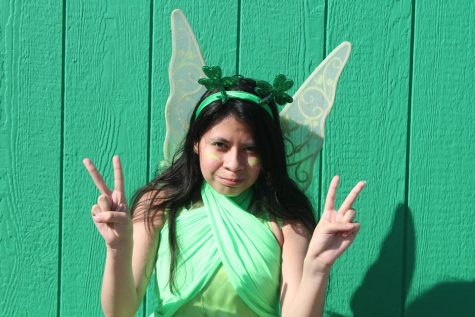New Club Leaders on What Meeting Looks Like During Distance Learning
December 16, 2020
With the ongoing pandemic and distance learning, school life has changed drastically for students, especially when it comes to peer interaction. One major aspect of student life is extracurricular activities, which have now switched to virtual platforms. While many clubs had to ponder how to adapt to the new virtual circumstances last school year, some students have taken on the challenge of starting a new club during distance learning this school year.
A major con for these clubs is not being able to engage with club members as well as they could have in school. Club founders can all agree that they wished their members had their cameras on. Abigail Lopez Freire is co-founder of Bridging the Gap, a club dedicated to connecting ERHS students to different educational & financial support programs. She says it can be “harder to talk to people when [she] can’t see them” but she is “grateful to have a community” and it can be amazing when you connect with someone online. Sophie Bose, the other co-founder of Bridging the Gap, said that it would be “interesting to see members in person since they don’t always have video on” and “it’ll be cool because [Abigail and her] feel close to them” and have a “connection to members.” For some clubs, not being able to meet face to face has made collaboration difficult to happen. Ms. Miller, sponsor of the Creative Writing Club, expressed that meeting “in person would provide an opportunity for multiple different activities to take place at once,” such as some students receiving feedback on a draft while others participate in different writing exercises. Tiffany Yang, co-founder of the Baking Club, has said that being in person would make it easier to show members how to bake and would allow them to taste their creations. Ella Williams, the other co-founder of the Baking Club, mentioned that she would like to do bake-a-longs with the club which would be easier in person. The amount of screen time spent for clubs in addition to classes can be concerning, Ms. Miller pointed out. The sponsor of the Baking Club, Mrs. Connealy, thinks that “by the end of the day students have had enough of sitting in front of a Zoom meeting” and “coming to a club that way” may not “ seem like a recreational activity.”
Despite all the cons these clubs face, they have recognized some pros about having an online club. One major benefit that many club founders and sponsors could agree on was that clubs are more inclusive during distance learning since transportation is no longer a problem for students. Ms. McShan, sponsor of Bridging the Gap, said that she was “surprised at the amount of people that wanted to join [Bridging the Gap]” and she definitely feels that is due to transportation not being needed to attend meetings. Jonah Valverde, co-founder of the Creative Writing Club, said that “having meetings is easier” since they are “more accessible” and “don’t need classroom space.” Another benefit is that technology has made some activities easier. Emma Yangilmau, the other co-founder of the Creative Writing Club has said that “viewing work” is much easier since they just have to share the screen instead of potentially using a projector if the club was in person. Friere has mentioned that they have been “able to do online-related things” like “start[ing] a blog” that addresses mental health. It has also been easier for these clubs to have guest speakers. Bose has commented that despite “networking [being] harder” online, now “anyone in the country or world” can “be in meetings.” Bridging the Gap has been able to have an environmental speaker and, according to Ms. Miller, the Creative Writing Club has been able to have “ a question and answer session with a published author.”
On transitioning their clubs from an online to an in-person environment, club founders and sponsors are mostly positive and are hopeful that they will be prepared when the time comes. For the Baking Club, Yang has said that it would be difficult since they would have to “reroute everything” and Williams commented that it would be like starting over. Mrs. Connealy believes that it will be “much easier to go from online to in person” and they would just “need to find a room with an oven.” Ms. McShan has said that “[Bose and Friere] will come up with solutions quickly without [her]” and she is “not too concerned” about transitioning since “the leaders are amazing.” Friere is “confident that it will be a smooth transition.”
While most clubs have founders that are juniors and may have a chance to lead the club in person, the Creative Writing Club’s founders are seniors and most likely won’t be around when the club is in person. Ms. Miller believes the transition will be easy for her since Yangilmau and Valverde have “provided a strong structure and foundations” and she is confident that they will select new leaders to run the club next school year. Valverde thinks that Ms. Miller will “do a great job” when she is able to sponsor the club in person. Among their senior stuff, such as college applications and research practicum, Yangilmau has commented that running the club is “not a burden” and Valverde agreed that it’s “a fun thing” compared to their other responsibilities as seniors.
It may be an unusual challenge to start a club during distance learning but club founders and sponsors are managing it well and will be prepared to transition when distance learning is over. All club founders and sponsors agree that it would be helpful for club members to participate and give feedback when they can. While attending and leading an online club is a different and new experience for all students, as Ms. Miller puts it, it “provides some normalcy in these challenging and different times.”




